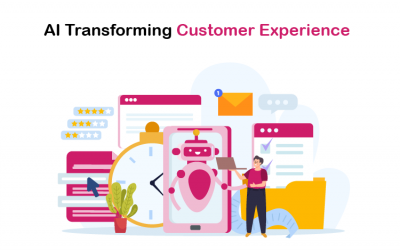Strategies for Customer Expectations | Adapting to Change

As technology rises, trends constantly change, and lifestyles are effectively emerging, customers play the role of the backbone of any business. Although their experiences at different brands and companies raise the expectations that most enterprises are unaware of. Hence it’s high time for industries to adapt to change for the sake of their precious customers, whose expectations are constantly evolving. Strategies for customer expectations is important.
Today, we will explore practical strategies for determining our customers’ growing expectations. We will also answer frequently asked questions from companies unaware of their customers’ tastes, styles, likes, and dislikes.
Changing behavior to adapt customers’ mindset
Customers are straightforward people; they adapt and evolve in ways they find attractive or beneficial. On the other hand to stay aligned with customers’ mindsets, it is essential to determine what type of customers your business needs and, second, what attracts or benefits them.

This strategy involves thorough market research, data analysis, socio-economic impact and technologies, and trends in the rapidly changing marketplace. Once all customer data is gathered, businesses can change their products and services according to customers’ tailored expectations and happiness.
The strategy also involves making the customer the center of the entire business. It involves actively listening to their complaints and working on their needs. Overall it consists of collecting valuable feedback, which is frequently implemented, and introducing new products or services that follow customers’ trends. The evolving change contrasts with customers’ expectations.
Adaptive marketing’s role in fulfilling the changing needs of the customer
Adaptive marketing is crucial for meeting the evolving needs of today’s customers. Besides it means making flexible marketing plans that quickly respond to changes in customers’ wants and expectations. So businesses use real-time data to see trends and promptly change their ads, who they aim at, and what products they offer.
We’ll see in strategies for customer expectations.
This marketing method ensures that ads connect with customers by giving them what they want when they want it. It focuses on making each customer’s experience unique to build loyalty. By consistently changing their marketing, businesses keep up with what customers want and even go beyond, helping them grow and stay competitive in a fast-changing market.
Techniques for Adapting to Changing Customer Behaviour
During a recession, customer behavior shifts, so you must modify your methods accordingly. It is crucial to reevaluate your marketing, improve your online presence, innovate your goods, and put your customers’ needs first. Below, let us examine these four tactics in more detail:
1. Reevaluate your marketing
How you pitch to customers is vital to any business’s marketing. How you introduce yourself is how you fulfill their needs. Certainly customers are looking for something that completes their needs and gives them a feeling of wanting more. Understand the needs of your customers and resonate deeply with them. More than messaging and marketing your products is required; you must stand out by making your presence known everywhere.
Social media platforms effectively determine customers’ needs and offer them the best goods possible. You interact with them and increase your engagement, positively affecting your insights.
2. Improve your online presence
The digital world has everything one needs. Not only is your business’s online presence essential but its flourishing and followers also matter. Marketing is a vast place, and there are too many competitors. To get noticed by your customers, it is essential to have an effective website that attracts leads and turns them into loyal customers.

Investigating e-commerce possibilities leads to new sales channels. In addition creating an online store or collaborating with well-known platforms allows you to take advantage of the expanding trend of online buying. Convenient and safe payment options boost client confidence.
Using web platforms to pinpoint consumer spending during a recession, you can obtain data analytics essential for comprehending customer behavior. Your marketing strategy can be adjusted using the knowledge you gain from tracking user trends.
3. Introduce new products and offers
Customers are always hungry for innovative products with unique deals and offers. Introduce and launch new goods and services into your business occasionally, gaining your customers’ attention. Provides seasonal offers, percentage discounts, and special deals that attract budget-conscious customers.
Supply home-based products and remote shopping along with virtual consultations. Modify current offerings to address clients’ budgetary concerns. In a recession, adjust pricing strategies and emphasize long-term value and durability to demonstrate your capacity to adapt to shifting consumer demands.
This increases the value of customers.
4. Boost retention and engagement
To gain customers’ trust, exceptional customer service is essential. These services should be provided to those who have made frequent purchases and are loyal to your brand regarding particular products.
The services include exclusive offers or early access to promotions. Hence providing recommendations based on past purchase history to foster a more profound connection and flexible return and exchange policies to accommodate evolving customer situations and engage with them effectively.
Conclusion
In conclusion, as customers’ expectations continuously change, it can be risky and difficult for businesses to keep up with their trends and lifestyles. They can achieve lasting growth by meeting changing customer needs. As customers look for value, affordability, and good online experiences, adjusting your strategy to meet these demands is crucial.
These were the key strategies for customer expectations.
Changes in customer behavior during a recession can influence future decisions. Therefore this means businesses must always be ready to adapt to a changing environment. As a result, companies can handle challenges and thrive in changing markets by observing customers’ wants, industry trends, and economic signs. Or connecting with a good customer experience platform to adapt to these changes.
Recent Posts
- How People Analytics Can Utilize Data to Drive Business Results
- The Role of AI in Enhancing Employee Feedback Systems
- How Purpose-Built AI Can Help You Build A Great Customer Experience
- Why is Customer Sentiment Analysis Crucial to Your Business?
- Customer Experience Statistics You Need To Know for 2025 | CX Statistics 2024



